






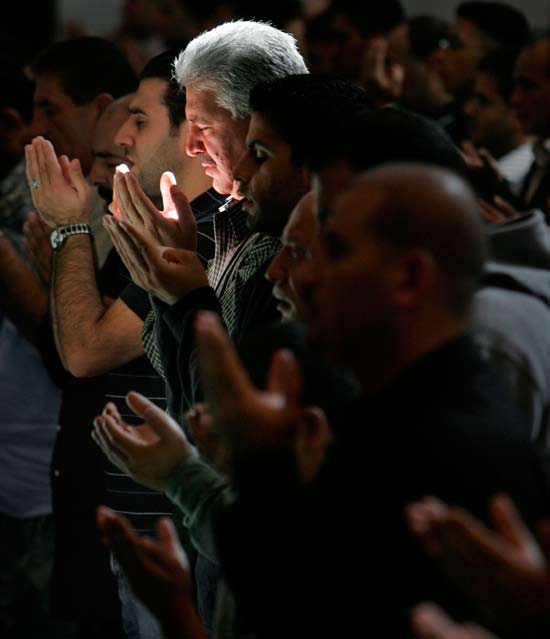


































































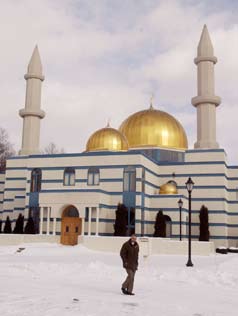

Photo
FAith
gAllerY
ty where, a few years earlier, fear was high and
munities around the nation.”
both businesses and schools closed in the wake
Among the healthy responses to the tensions
of 9/11, according to the New York Times. By
triggered by the terrorist at acks is an expansion of
the time Fatima arrived, Little Pakistan had recov-
the interfaith dialogue in the United States.
ered under the leadership of local businessman
“Anytime you share a space with someone of
Moe Razvi, who helped start English and computer
another culture, you are bound to grow as an in-
Clockwise from left, Mohamad Hammoud prays at
classes, opened a community center, and led com-
dividual and learn to see things from another per-
the Islamic Center of America mosque in Dearborn,
munity leaders to meet and improve relations with
spective,” said Kareema Daoud, a doctoral student
Michigan; Mariam Motala, at right, prays at the
federal authorities.
in Arabic language and literature at Georgetown
Islamic Center of Hawthorn, California; a young
“The annual Pakistan Independence Day parade
University who has served as a volunteer citizen
boy hopes to join in on prayers in Brunswick, New
is awash in American flags,” the Times reported. “It
ambassador for the Department of State. “There is
Jersey; the Islamic Center of Cleveland, in Parma,
is a transformation seen in Muslim immigrant com-
beauty in diversity,” Daoud concludes.
Ohio, is home to more than 300 worshippers.
22
23




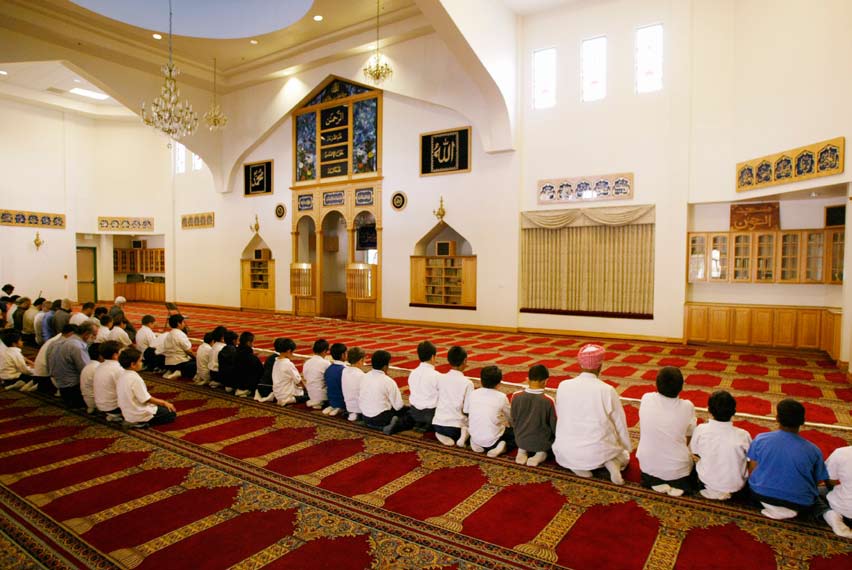
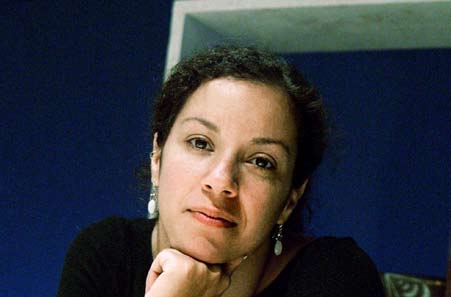
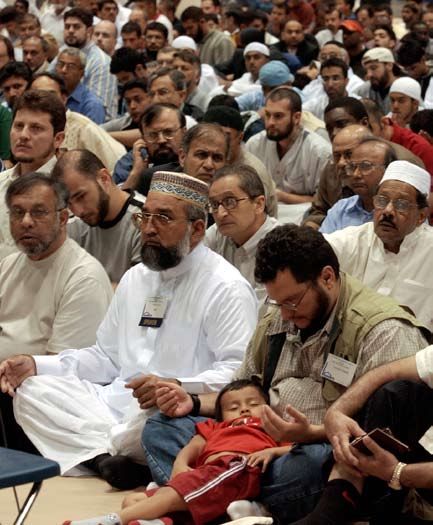

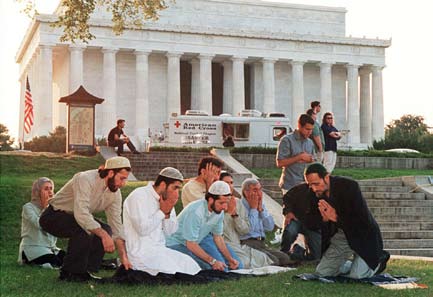
The 9/11 attacks also galvanized the Muslim-
American community to become more active in civic
and political activities — to advocate for issues of
concern, to build alliances with non-Muslim organi-
zations — and to confront intolerance and threats
of violence.
“Active engagement and involvement in politics
reflects the fact that American Muslims are part of
the social fabric of America, and also reflects their
patriotic concern for this country,” says editor and
writer Nafees Syed of Harvard University in a com-
mentary on the free-wheeling discussion Web site
altmuslim.com
Paraphrasing President John F. Kennedy, Syed
continues, “The question is not only how taking part
in the political process wil aid American Muslims,
but how American Muslims can help this country.”
Like the global population, the majority of Amer-
ican Muslims are Sunni, although there are large
numbers of Shia and groups who actively fol ow
Sufi traditions. Despite this diversity, says Paul Bar-
rett, author of the 2007 book American Islam: The
Struggle for the Soul of a Religion, “distinctions
that possibly loomed larger elsewhere are instead
in America ‘diluted’ in the deep pool of pluralism
that characterizes American society. ... Many im-
migrants have taken the ambitious step of crossing
continents and oceans because they want to es-
cape old-world antagonisms, to pursue education,
economic bet erment, and a more hopeful life for
their children.”
Progressive forms of belief, a more prominent
role for women, even the recent evolution of “mega-
Above, top, children attend evening prayers; above, Playwright Suehyla El-Attar poses on the set of her play, mosques” resembling in size the large evangelical
“The Perfect Prayer.” Opposite page: Top, Muslims pray in front of the Lincoln Memorial in Washington, D.C.; Christian churches — are among the characteristics
bottom, men gather at a Chicago, Illinois meeting.
of a rapidly evolving, uniquely American Islam.
24
25




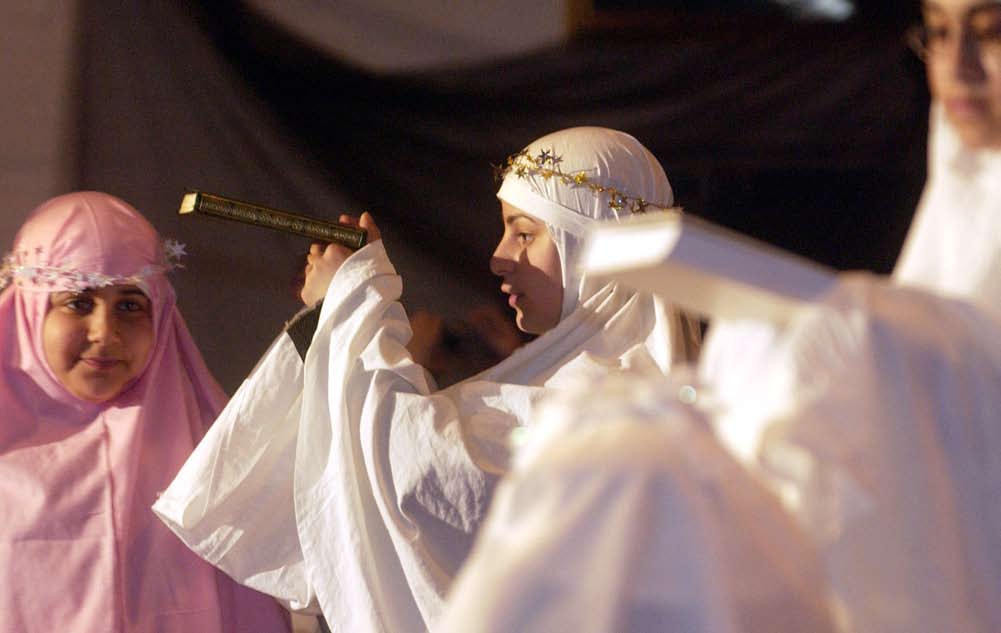
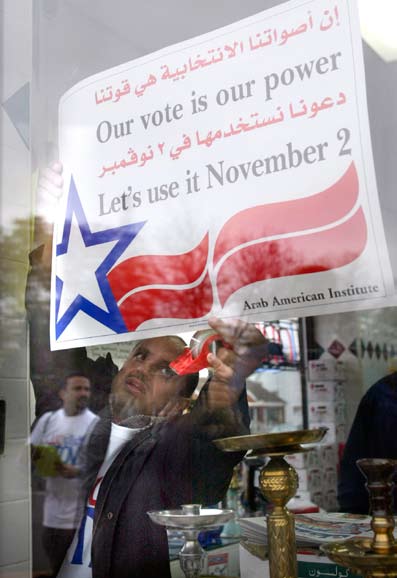
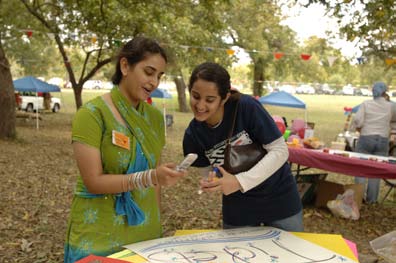



































“I have found that Muslims in America are meld-
ing their faith, ethnic background, and the folkways
of their adopted land in many different ways,” Bar-
ret said in an interview on altmuslim.com. “There
is no one formula, just as there hasn’t been a for-
Photo
speCiAl DAys gAllerY
mula for past immigrant groups. ... I’m confident
Clockwise from above, Nawal Daoud holds the
that there won’t be one story about how Muslims
Quran over the heads of girls as they walk underneath
assimilate. There will be many stories.”
it during a Takleef ceremony; Hafiz Azzubair posts
a sign urging people to vote; Young Muslim women
read a text message on a cell phone at the End of
Ramadan Festival in Austin, Texas.
26
27




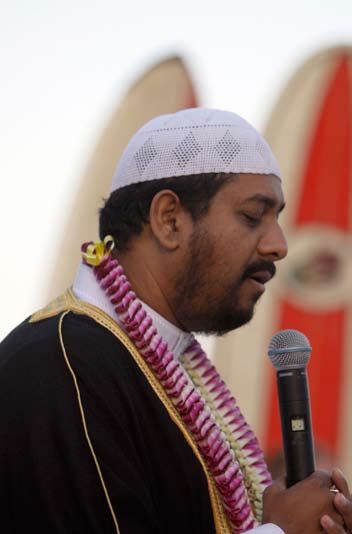
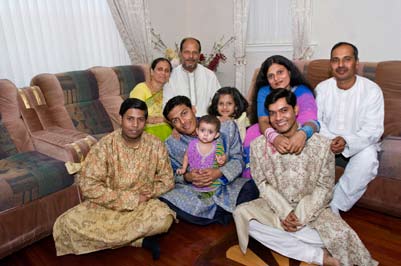
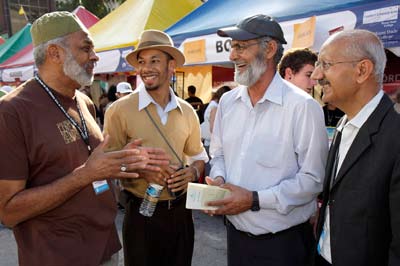

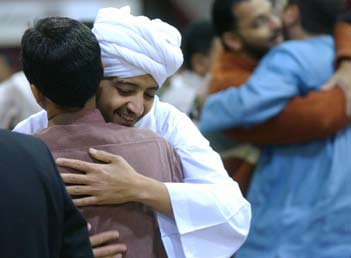
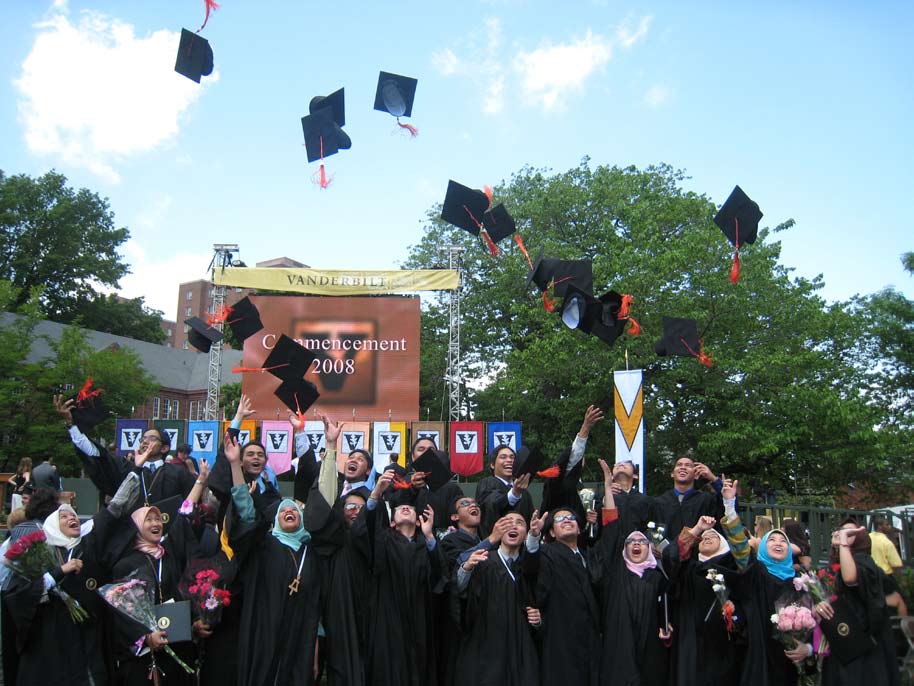
“I have found that Muslims in America are melding their faith,
ethnic background, and the folkways of their adopted land in
many different ways. ... I’m confident that there won’t be one
story about how Muslims assimilate. There will be many stories.”
— Paul Barrett
This page: Clockwise from bottom left, In Brooklyn, N.Y., three generations gather to celebrate Eid ul-Fitr, marking the end of Ramadan; At the Miami Book Fair International in Florida, multi-ethnic booksellers exchange greetings; Fawad Yacoob speaks during the Blessing of the Waves ceremony in California; in Tyler, Texas, men embrace during Eid ul-Fitr celebrations. Opposite page: Members of the Malaysian Students Association celebrate their graduation from Vanderbilt University in Nashville, Tennessee.
28
29





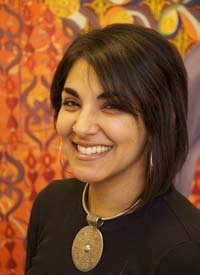
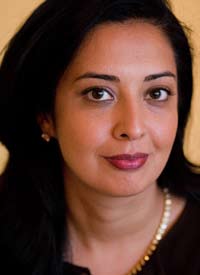
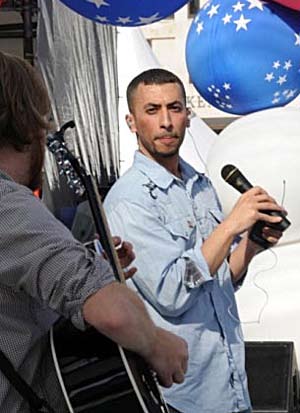
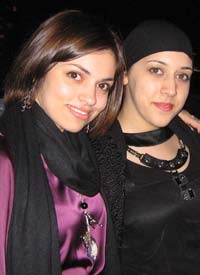
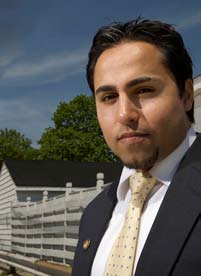
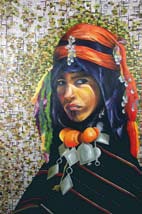































AmerIcAn
Artist
to the richness of Arab and Egyptian culture
that she had “previously overlooked or taken
heBA
for granted.”
A
For several years, Amin’s work revolved
mIn
around portraits of Bedouin women, who, she
said, “are known for their embroidered and
beaded crafts.
The contemporar y art-
“The European Union had a program de-
ist Heba Amin, 28, has
signed to preser ve these crafts, funding the
been drawing for as long
work and encouraging older women to teach
as she can remember,
younger ones. I became interested in that and
but pursuing art full-time
stayed with different tribes to see the process
did not occur to her until she was a junior in
working. I also apprenticed with a Bedouin
P
college. At the time, Amin, who now lives in
r o f I l e s
artist who created sand paintings.”
Minneapolis, was a math major and first en-
As Amin spent time with different Bedouin
visioned herself as an architect.
tribes, she realized she was even more inter-
Amin was born and raised in Cairo, Egypt.
ested in their way of life than their craft.
Her late father was an interior designer; her
“I was struck by how attached they were
mother, an administrative worker at the pri-
to their surroundings and the land, and how
vate American school Amin attended from kin-
sad it was that their culture was deteriorating
dergarten through 12th grade.
due to urban sprawl and modernization,” she
After high school, Amin traveled to the
recalled.
United States to attend Macalester College,
Amin began painting
a private, liberal arts school in St. Paul, Min-
brightly colored portraits
nesota. By her third year, Amin realized that
of Bedouin women juxta-
her heart lay in art, not math, and in 2002
posed with urban geomet-
she earned a bachelor’s degree in studio art,
Y
ric patterns. “The patterns
oung muslIms mAke theIr mArk
with a concentration in oil painting.
over whelm the paintings,
Living in the United States, she told Fayeq
representing how the city
Top row, from left, Imam Khalid Latif; filmmaker Lena Kahn; artist Heba Amin. Bottom row, from left, business-Oweis, editor of the Encyclopedia of Arab
is taking over the Bedou-
man Moose Scheib; fashion designers Nyla Hashmi and Fatima Monkush; singer Kare






















































































































































































